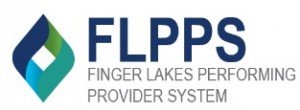
 Last month, CSH President and CEO Deb De Santis was the featured speaker at the 8th Annual North American Housing Conference: "Housing is Health Care" in Niagara Falls, New York. One of the participants at the Conference, Teresa Bales, Project Manager for the Transitional Supportive Housing project and the Housing Advisory Group at the Finger Lakes Performing Provider System (FLPPS), reflected on what she heard in Niagara, her observations on housing-healthcare integration and collaborations, and submitted the following guest blog.
Last month, CSH President and CEO Deb De Santis was the featured speaker at the 8th Annual North American Housing Conference: "Housing is Health Care" in Niagara Falls, New York. One of the participants at the Conference, Teresa Bales, Project Manager for the Transitional Supportive Housing project and the Housing Advisory Group at the Finger Lakes Performing Provider System (FLPPS), reflected on what she heard in Niagara, her observations on housing-healthcare integration and collaborations, and submitted the following guest blog.
When an assessment of community needs[1] identified housing as a primary barrier to improved outcomes, leadership of the Finger Lakes Performing Provider System (FLPPS) took action, selecting Transitional Supportive Housing (TSH), as one of eleven projects that FLPPS would implement under New York State’s (NYS’s) Delivery System Reform Incentive Payment (DSRIP)[2] program. DSRIP is an incentive payment model federally funded by Medicaid 1115 waivers. As part of NYS’s efforts to change how health care services are delivered and paid through under Medicaid Redesign, DSRIP incentivizes health and community-based providers to form regional collaborations, Performing Provider Systems (PPS), and implement innovative system transformation. The overarching objective of DSRIP is to improve clinical outcomes and reduce avoidable hospital use by 25% over five years.
The TSH project targets high risk individuals with housing instability who have difficulty transitioning from a hospital to community-based setting. Somewhat a misnomer as supportive housing is a long-term, permanent evidence-based intervention, TSH based on the NYS-defined scope, must help stabilize these high-risk individuals by ensuring access to a combination of non-permanent housing combined with the full range of supportive services required by their medical and/or behavioral conditions. Selection of the TSH project prioritized housing stability across FLPPS’s 13 county service area and dedicated funds to tackle housing as both a social determinant of DSRIP’s clinical outcome goals as well as a vital intervention in the transformation of health care delivery towards value-based reimbursement.
I was hired in November 2014 to manage TSH project and soon experienced a myriad of challenges associated with project implementation. First and foremost, there is a lack of comprehensive data that systematically links housing status with health information. Housing status is absent from medical claims data and pockets of data held by housing providers varies greatly. Furthermore, patient consent and data sharing agreements required to coordinate and match data across systems are not commonplace. As a result, it is virtually impossible to quantify supply and demand for the range of housing options that either exist or are needed. A recent study conducted by CSH is the first attempt to assess the supportive housing need for individual and family households in certain geographies of NYS and found an unmet supportive housing need of over 1,500 units in Monroe County in 2013.
Inadequate staffing, including shortages in visiting nurse services, is a second hurdle to project implementation: when discharging housing-unstable patients with co-morbidities, hospitals often feel compelled to choose between prioritizing either a patient’s medical or behavioral health condition, particularly in the absence of sites capable of managing both.
Finally, lack of safe and affordable permanent housing is a critical risk to successful project implementation. If there are insufficient long term solutions available, we will simply move the bottleneck from hospital beds to transitional housing sites.
As an early first step towards project success, much of my work over the last year has involved relationship-building between hospitals, housing and care management providers to address the TSH project’s emphasis on improved care transitions and tailored support services upon discharge. Building bridges between housing and health systems to better coordinate assessment and care for behavioral, medical health and social needs will enable the FLPPS network to provide quality population health management for its neediest and highest cost patients.
While attending the North American Housing Conference in November, I was struck that my experience working on the TSH project might offer guidance to community and Housing and Urban Development (HUD)-funded housing providers looking to realize the opportunities presented by health system transformation and the move to value based payment. I encourage housing providers to begin identifying opportunities to strategically expand partnerships with health systems, measure the impact of housing on health outcomes and ultimately leverage the transition to value-based payment to realize billable residential and supportive services. Further, if we embrace genuine collaboration, openness to eliminate duplicative services, and willingness to leverage the value-add for each type of service provider, we should find ourselves truly at the helm of a unique and momentous opportunity to build an integrated delivery system that is poised to deliver patient-centered population health management.
Teresa Bales is Project Manager for the Transitional Supportive Housing project and the Housing Advisory Group at the Finger Lakes Performing Provider System (FLPPS). Visit the FLPPS website for more information.
[1] Finger Lakes Health Systems Agency, “Community Needs Assessment: Finger Lakes Performing Provider System Delivery System Reform Incentive Program Final Grant Application.” December 18, 2014.
[2] More information can be found the NYS DOH website.


